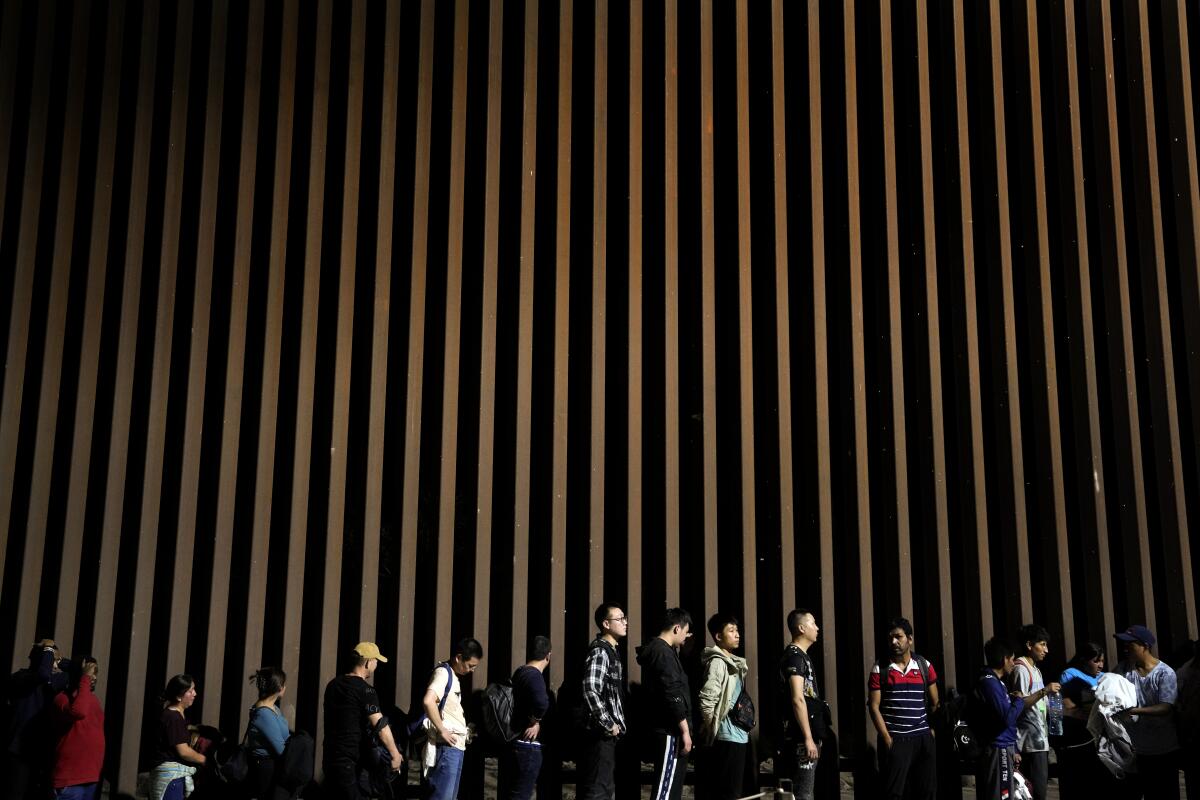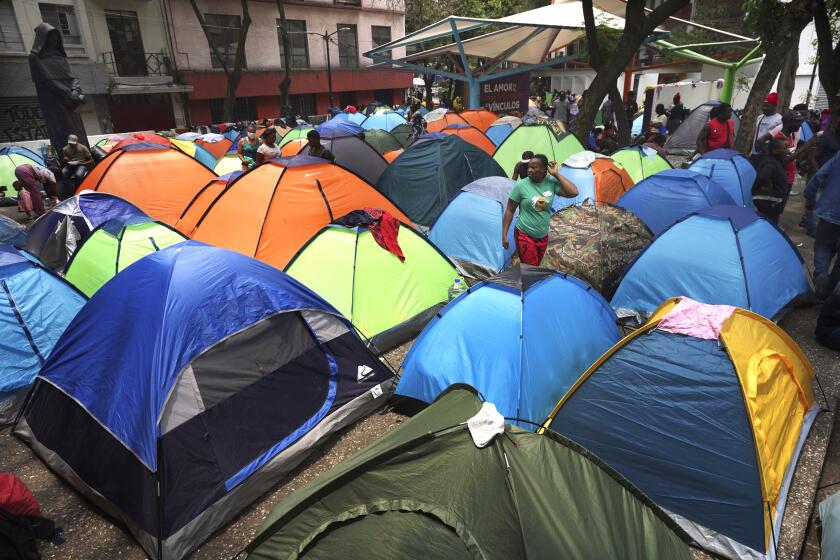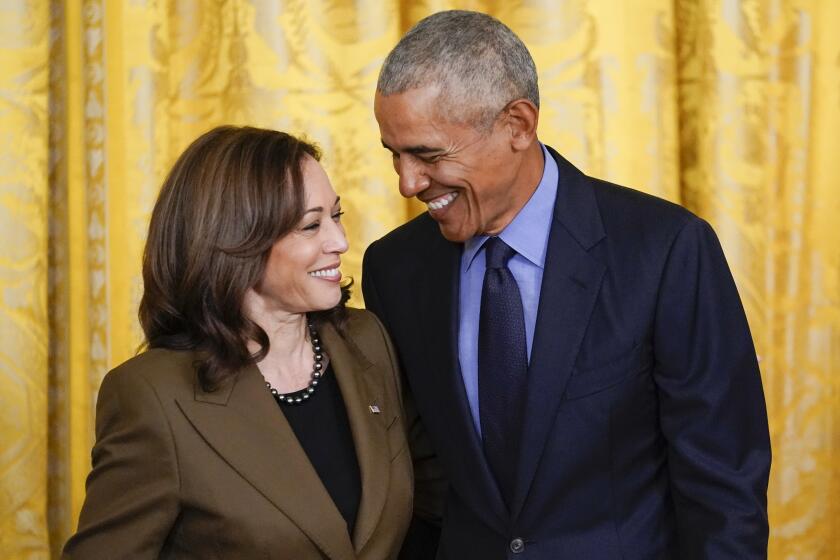Biden administration wants to speed up deportation for some migrants. How will it work?

WASHINGTON â The Biden administration proposed a rule Thursday aimed at speeding up the deportation process for migrants who are already ineligible for asylum.
The change isnât expected to have broad implications, but rather tighten existing rules. It comes as the White House and Democrats play offense on the border and immigration, one of the top issues ahead of the presidential election.
âThe proposed rule we have published today is yet another step in our ongoing efforts to ensure the safety of the American public by more quickly identifying and removing those individuals who present a security risk and have no legal basis to remain here,â said Secretary of Homeland Security Alejandro Mayorkas. âWe will continue to take action, but fundamentally it is only Congress that can fix what everyone agrees is a broken immigration system.â
For first time in 25 years, San Diego is the top spot in the nation for migrant border crossings, surpassing Tucson.
What would the new rule do?
Significant immigration court backlogs mean it can take years before migrants who cross the border without authorization are determined to be ineligible for asylum. The new rule would allow asylum officers to make that determination within days.
The rule would move up checks for mandatory bars to asylum, such as criminal history or terrorism links, to the initial stage of the process, allowing immigration officers to quickly reject and deport those who donât qualify. It would not restrict more people from applying for asylum.
Migrants who intend to apply for asylum must first pass so-called credible fear interviews, which allows them to later make their case before an immigration judge. The regulation would allow asylum officers to check for public safety or national security risks during the credible fear screening.
A senior DHS official who spoke to reporters Thursday on the condition that he not be named said the agency is updating procedures to ensure available information, including information that is classified, is shared as early as possible in the immigration process. The rule allows the agency to save taxpayer money because those who are subject to asylum bars are detained throughout the lengthy immigration court process, the official added.
An encampment in the Juarez neighborhood of Mexico City shows how migration is impacting countries south of the U.S. border.
In 2020, the Trump administration implemented a rule similarly instructing asylum officers to apply asylum bars during credible fear screenings. That rule was blocked by a U.S. District Court in California.
But the Biden administration says this rule is different because it doesnât require asylum officers to consider bars in all interviews. Instead, asylum officers âwould only consider a bar in those cases where there is easily verifiable evidence availableâ and the officer âis confident that they can consider that bar efficiently at the credible fear stage,â the proposed rule states.
How many people could be affected?
The number of migrants subject to the bars is low, according to the proposed rule. For this fiscal year through April 23, federal records indicate that asylum officers flagged a potential bar in 733 cases. Last fiscal year, asylum officers flagged 1,497 such cases â 3% of all positive credible fear determinations.
When does it take effect?
Proposed rules can take months to finalize, and must go through a public comment period before implementation. That could make for a close timeline before the November election.
The DHS official said the agency will accept comments for 30 days starting May 13 and expects to issue the rule fairly quickly after that.
How are people reacting?
Immigrant rights advocates swiftly condemned the move, saying the change could slow down and weaken the credible fear process. But the DHS official said the rule wonât meaningfully increase the time it takes to interview someone.
Eleanor Acer, senior director for refugee protection at Human Rights First, said the rule would deny asylum hearings to people who could be eligible for protection.
âIt is both unrealistic and unconscionable to subject people seeking refuge to legally and factually complex bars to asylum during initial fear screenings where they are not likely to be represented by legal counsel,â she wrote in a statement. âSome of the bars included in the proposed rule have long baffled legal experts and government lawyers, and ensnared people who are innocent of any wrongdoing.â
Meanwhile Rep. Mark Green (R-Tenn.), chair of the House Committee on Homeland Security, said in a statement that the rule doesnât go far enough to properly vet migrants.
âThis rule appears to be an unserious, politically motivated attempt to address a significant problem the Biden administration itself created,â Green wrote.
What else has the Biden administration done to curb border crossings?
Last year, the administration began disqualifying migrants from asylum if they enter the U.S. illegally without first requesting humanitarian protection in another country, such as Mexico, along the way. This effectively blocks most people from accessing asylum if they cross unlawfully.
At the same time, the administration expanded a phone app, CBP One, that lets migrants in Mexico schedule a time to be processed at official ports of entry. Officials also expanded a program that allows migrants from certain countries, such as Venezuela, fly directly to the U.S. if they have a sponsor.
On Wednesday, advocacy groups sued the federal government for records about its policies and practices related to the mobile app, calling it a barrier to asylum because of frequent glitches and months-long waits for an appointment.
Depending on whom you ask, the federal immigration app CBP One is a solution to the border crisis, a human rights violation or a ploy to let anyone into the U.S.
What more is the administration considering?
The new asylum rule comes as the administration mulls how else to cut down on illegal border crossings ahead of the election.
Biden said in a Univision interview last month that he is considering whether to invoke a sweeping presidential authority to more broadly restrict asylum without congressional authorization. The action would employ a section of the Immigration and Nationality Act called 212(f), which allows presidents to suspend entry of migrants when deemed detrimental to national interests.
Former President Trump used that authority to justify restrictions including travel bans against people from predominantly Muslim countries.
More to Read
Get the L.A. Times Politics newsletter
Deeply reported insights into legislation, politics and policy from Sacramento, Washington and beyond. In your inbox three times per week.
You may occasionally receive promotional content from the Los Angeles Times.














